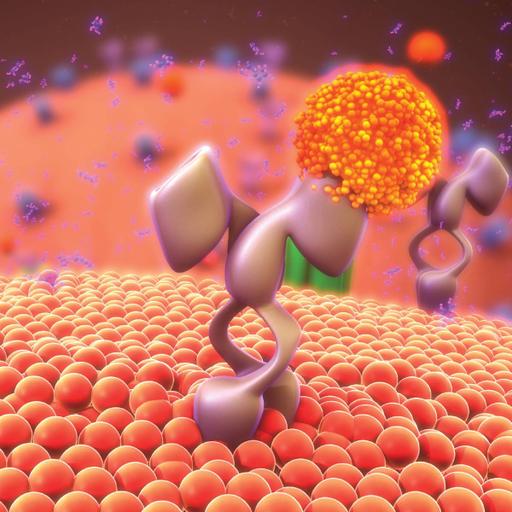Plasma Membrane
Presentations | English
The cell membrane (also known as the plasma membrane (PM) or cytoplasmic membrane, and historically referred to as the plasmalemma) is a biological membrane that separates the interior of all cells from the outside environment (the extracellular space) which protects the cell from its environment. The cell membrane consists of a lipid bilayer, including cholesterols (a lipid component) that sit between phospholipids to maintain their fluidity at various temperatures. The membrane also contains membrane proteins, including integral proteins that go across the membrane serving as membrane transporters, and peripheral proteins that loosely attach to the outer (peripheral) side of the cell membrane, acting as enzymes shaping the cell. The cell membrane controls the movement of substances in and out of cells and organelles. In this way, it is selectively permeable to ions and organic molecules. In addition, cell membranes are involved in a variety of cellular processes such as cell adhesion, ion conductivity and cell signaling and serve as the attachment surface for several extracellular structures, including the cell wall, the carbohydrate layer called the glycocalyx, and the intracellular network of protein fibers called the cytoskeleton. In the field of synthetic biology, cell membranes can be artificially reassembled. The plasma membrane is a biological membrane that surrounds every living cell to separate the internal components from the outside. It guards the cell against the various external stressors or substances. It is composed of a phospholipid bilayer, proteins, lipids, carbohydrates, and other components. The distinctive components of the plasma membrane make it a selectively permeable barrier. It is “semi-permeable” because it regulates what goes in and goes out through cellular transport mechanisms. It also facilitates the transmission of cellular signals. It is very flexible, allowing certain cells, such as red blood cells and white blood cells, to change shape as they pass through narrow capillaries.

40.00
Lumens
PPTX (80 Slides)
Plasma Membrane
Presentations | English
